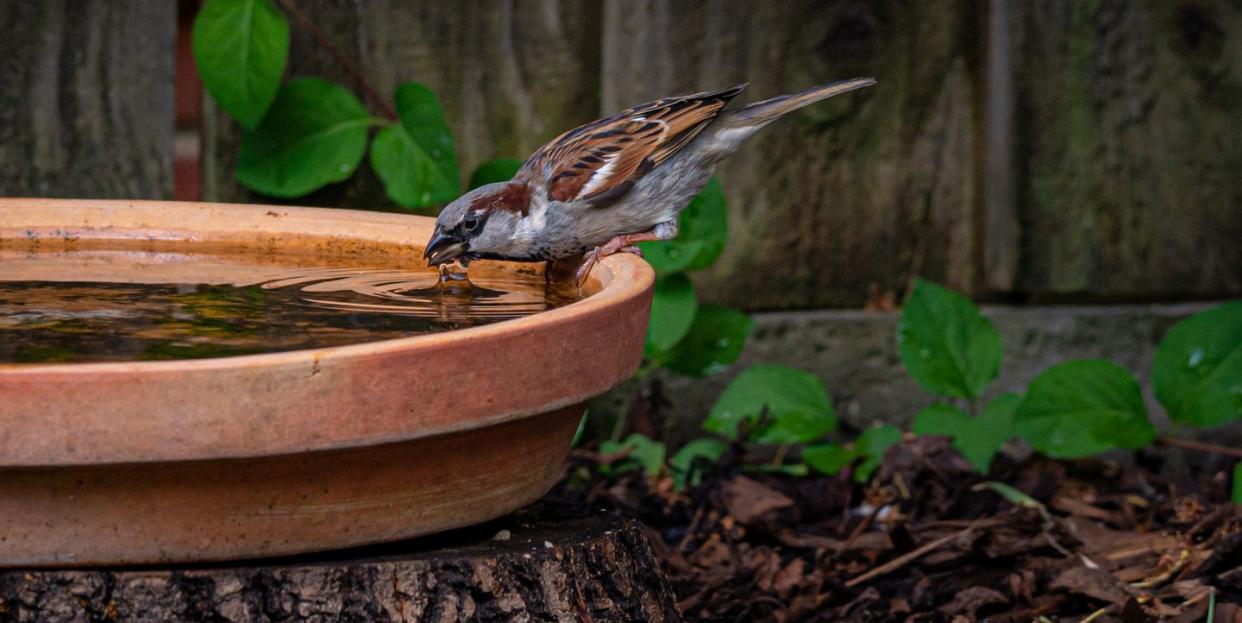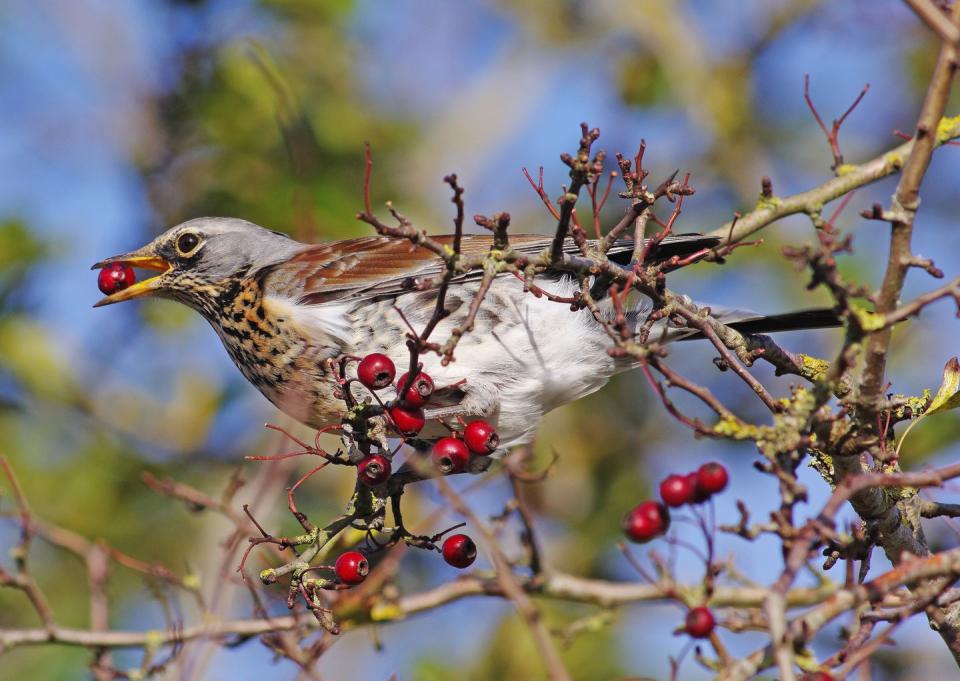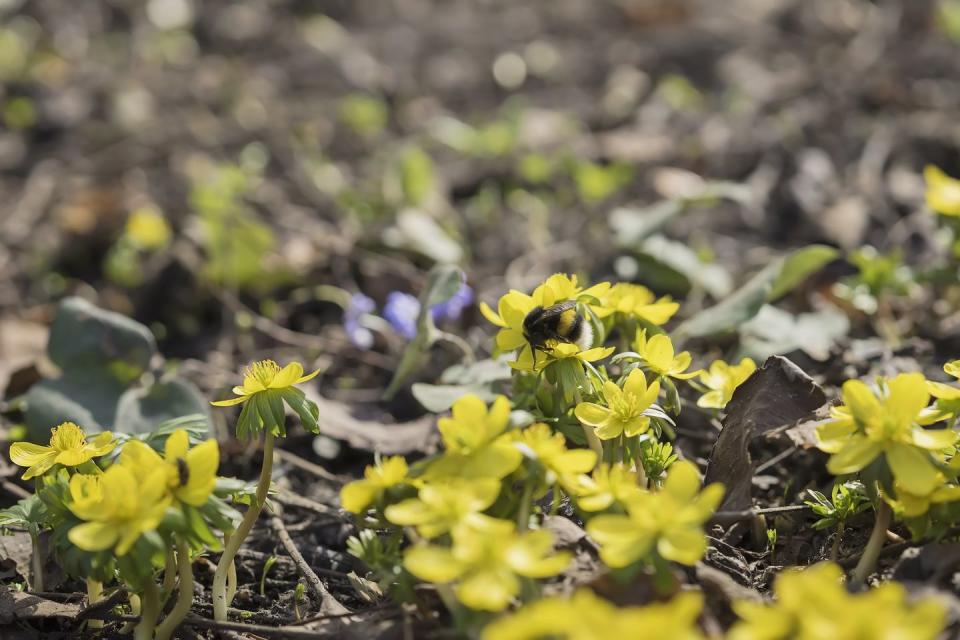15 simple and inexpensive ways to help wildlife this winter

Our gardens provide a crucial refuge for wildlife, even more so in winter when food sources are scarce and temperatures low. It's during these cold months that we can significantly impact the survival of various species by offering food, water and shelter in even the smallest gardens or balconies.
From thoughtful planting schemes to help pollinators on sunny winter days, to ice-free water for wildlife when temperatures plummet, the Royal Horticultural Society (RHS) has shared 15 ways gardeners can give wildlife a helping hand this winter.
'Providing food and a safe haven when resources are otherwise scarce is a vital lifeline, and we can all do our bit to help,' says Helen Bostock, senior wildlife specialist at the RHS. 'By following a few simple and inexpensive steps gardeners can contribute to a thriving ecosystem and enjoy a sense of connection to nature, even at this quiet time of year.'
Here's how to turn your space into a haven for wildlife and brighten up the darkest of winter days.
Birds

1. Help birds in winter by putting out high calorie food such as fat balls, suet blocks or even grated cheese and bacon rinds. Beware of balls in plastic nets as birds including woodpeckers can get their tongues caught.
2. Create your own fat blocks by melting suet into moulds such as coconut shells or logs with holes drilled in. Try different recipes to entice a range of birds; peanut cakes for starlings, insect cakes for tits, and berry cakes for finches. While fat is important, provide a grain mix or nuts to maintain a balanced diet.
3. Sparrows, finches and nuthatches enjoy prising seeds out of sunflower heads, so leave these out in the garden, or place in a bird feeder.
4. Use wire mesh feeders for peanuts and seed feeders for other seed. Specially designed feeders are needed for the tiny niger seed, loved by goldfinches.
5. Feed placed on a wire mesh held just off the ground will entice ground-feeding birds such as robins and dunnocks. Thrushes and blackbirds favour fruit, so scatter over-ripe apples, raisins and songbird mixes on the ground for them.
6. Consider planting fruit trees and shrubs, such as apple trees, hawthorn, holly, Cotoneaster and Pyracantha. These plants attract winter migrants such as redwings and, if you're very fortunate, waxwings from the countryside into gardens.
7. Put food out regularly, rather than sporadically, as otherwise birds will waste vital energy visiting your garden for little reward.
8. In late winter, clean out bird boxes so they are ready for new nests in spring.
Other wildlife

9. Incorporate winter-flowering species into your planting scheme to attract pollinators such as bumblebees. Snowdrops, aconites, mahonias, crocuses, and hellebores are all popular, but select single flower varieties, rather than double, so that the nectar and pollen is more readily available.
10. Melt a hole in the ice on ponds to allow the wildlife to drink, as well as enter and exit the water. Place a saucepan of hot water on the ice until a hole has been melted. Do not hit or crack ice as this can send shockwaves through the water that harms wildlife.
11. Provide a shallow dish or container of water at ground level to benefit other garden wildlife that needs to drink, as well as birds. Check it daily, especially in icy conditions, to ensure a supply of clean, unfrozen water is always available.
12. Be careful when emptying out compost heaps. As these are often warm, they can be the winter resort of frogs, toads and other animals.
13. Woody prunings and dead wood are most useful to wildlife if stacked up in a pile. The same goes for leaves, which provides shelter for hibernating animals such as hedgehogs, toads and frogs.
14. If you have a new garden with few mature plants and hiding places for insects, make a bug hotel and place it in a sheltered position. Overwintering ladybirds and lacewings will find this useful.
15. Leave healthy herbaceous and hollow-stemmed plants unpruned until early spring – these can provide homes for insects during winter.
Follow House Beautiful on TikTok and Instagram.
You Might Also Like



